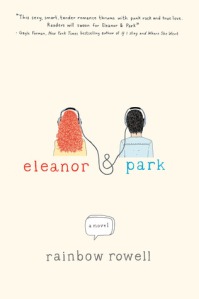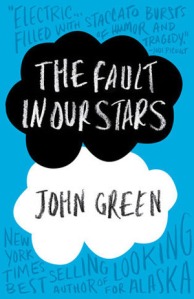There’s something about the holiday season that makes me want to curl up with a cozy blanket, hot chocolate, and read stories of love. Let It Snow was the perfect holiday read.
 Let It Snow
Let It Snow
by John Green, Maureen Johnson, and Lauren Myracle
352 p. Speak. 2008.
Gr 9 Up
Three authors of teen fiction join together to write a collection of linked novellas set in the same town in North Carolina around Christmas Eve. When a snowstorm hits, a packed train get stuck in the resulting snow, and the teens from the train interact from the teens from the town in hilarious and romantic ways. In Johnson’s “Jubilee Express,” Jubilee meets Stuarts, who convinces her she deserves better than the boyfriend she left at home. Green portrays the teen male perspective with humor and wit that reminded me of Paper Townsin “Cheertastic Christmas Miracle,” in which Toby struggles on his quest through the snow with his two buddies to reach the Waffle House in order to meet 14 stranded cheerleaders. In Myracle’s “Patron Saint of Pigs,” Addie agonizes about her recent breakup. Everything concludes nicely with all the main characters enjoying coffee at Starbucks.
The Feels
Mild feels. The stories are tender and humorous with believable characters. Johnson’s was probably my favorite of the three, and I did not much care for Myracle’s story at all. The stories illuminate the magic of the holidays, and the collection is a light, but satisfying read for cold winter nights.





 No. It is not okay. I am not okay. Stop saying it’s okay.
No. It is not okay. I am not okay. Stop saying it’s okay.

 we are feeling so many things at the same time, and instead of trying to work it out we just say, “Oh, the feels,” or “I can’t handle the feels” or “So many feels,” because it is easier and people still understand what we are trying to say: “I feel intense emotions that I cannot adequately describe.”
we are feeling so many things at the same time, and instead of trying to work it out we just say, “Oh, the feels,” or “I can’t handle the feels” or “So many feels,” because it is easier and people still understand what we are trying to say: “I feel intense emotions that I cannot adequately describe.”